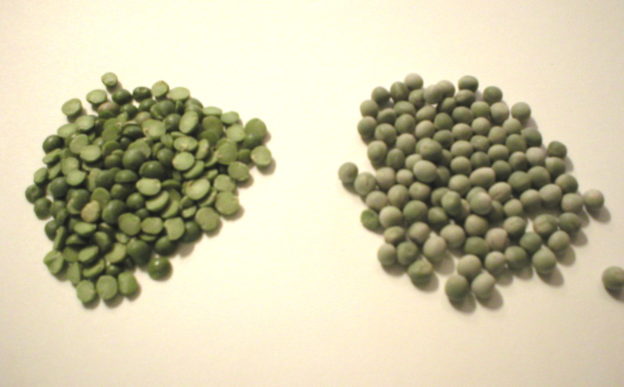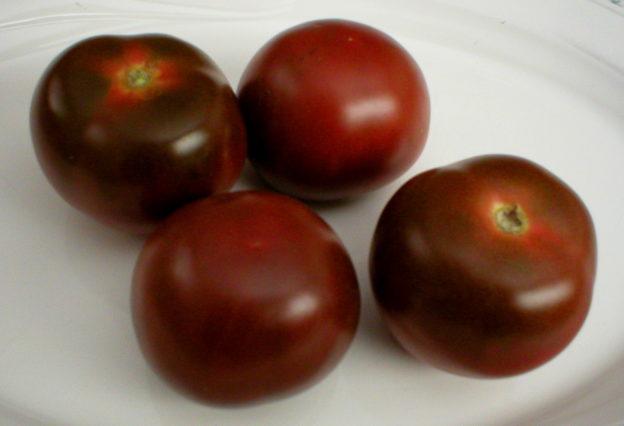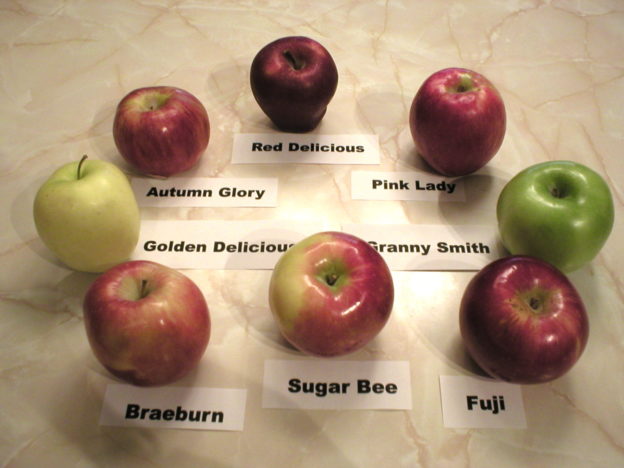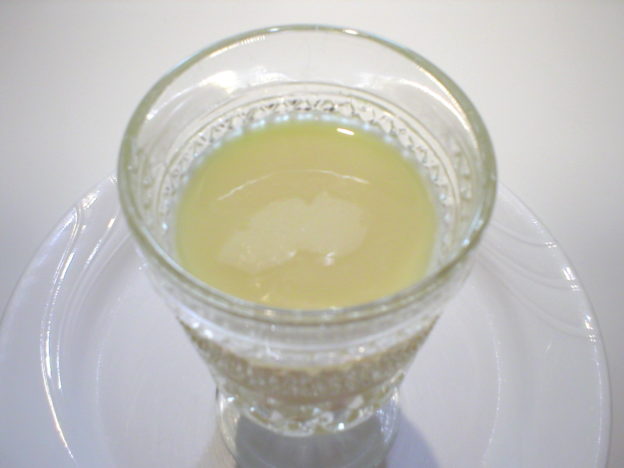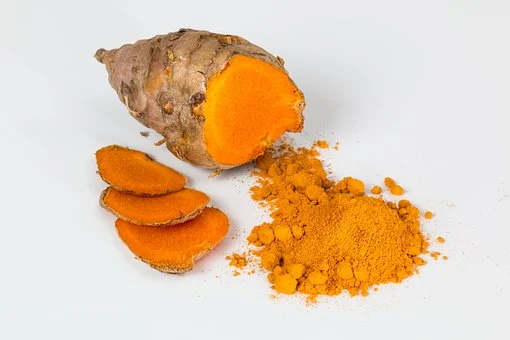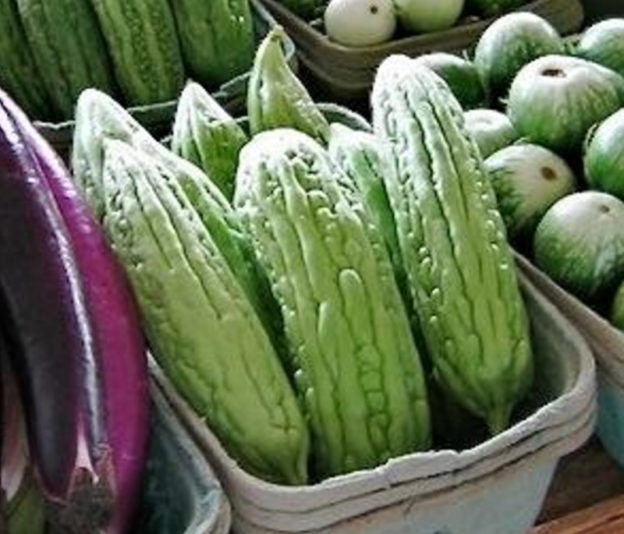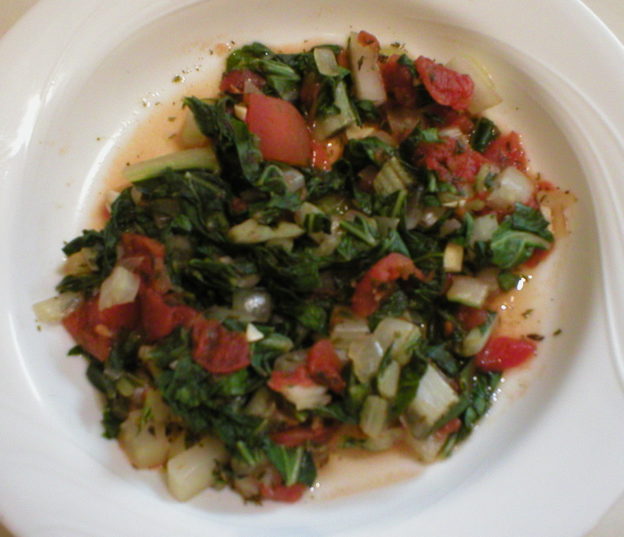Cucumbers 101 – The Basics
About Cucumbers
Cucumbers, or Cucumis sativus, belong to the same plant family, Curcubitaceae, as melons (such as watermelon and cantaloupe) and squash (including summer and winter squash, such as zucchini and pumpkin). There are hundreds of varieties of cucumbers, with two basic types: slicing (grown for fresh consumption), and pickling (grown for being processed into pickles). Slicing cucumbers are usually larger with thicker skins, while pickling cucumbers are smaller with thinner skins.
We’re used to seeing cucumbers in grocery stores as being long and deep green in color. However, cucumbers come in different colors, sizes, shapes, and textures. Some are white, yellow, or orange in color. They may be short, long, oval or even round in shape. Skins may be smooth and thin or thick and rough.
Cucumbers are believed to have originated in parts of Asia that have warmer climates, including parts of China, India, Sri Lanka, Myanmar, and Thailand. Cucumbers have since been carried around the world and are cultivated anywhere the climate will accommodate them. In the United States, Florida, Michigan, North Carolina, Ohio, and Texas are the top cucumber producers. Despite the amount of cucumbers grown within the United States, since they are such a popular food, much of what is consumed in America is imported from Mexico.
Nutrition and Health Benefits of Cucumbers
Cucumbers are an excellent source of Vitamin K and molybdenum. They also contain a lot of pantothenic acid, copper, potassium, manganese, Vitamin C, phosphorus, magnesium, biotin and Vitamin B1.
Cucumbers are mostly water, and that may be the reason they have received little attention in medical and nutritional research. However, in addition to the ample supply of vitamins and minerals cucumbers contain, they have an impressive list of phytonutrients. Cucumbers contain a wide array of flavonoids, lignans, and triterpenes that provide some important health benefits.
Antioxidant and Anti-Inflammatory Benefits. The majority of the phytonutrients found in cucumbers have been shown to have antioxidant and/or anti-inflammatory effects, either directly or indirectly by influencing enzymes or metabolic pathways. Some of these compounds have been shown to have anti-cancer and also anti-diabetic effects, helping to regulate blood sugar levels.
These compounds have also been the focus of studies related to the prevention of cardiovascular disease. The phytonutrients in cucumbers have been found to reduce the production of reactive oxygen species (ROS) and reactive carbonyl species (RCS) that can be generated during cellular metabolism. This, in turn, helps to protect our blood vessel walls and blood constituents from damage due to these reactive compounds. This action helps to protect us from developing cardiovascular disease. Furthermore, human studies have shown that subjects taking extracts from cucumber seeds experienced improvement in their blood cholesterol levels (including total cholesterol, LDL, triglyceride, and HDL components). All the more reason not to remove seeds from cucumbers!
Types of Cucumbers
English (Seedless) Cucumbers. English cucumbers are long with a deep green color and thin, slightly bumpy skin. The flesh is firm and juicy. They are either seedless or have very tiny, edible seeds. These are found in the refrigerated produce section and are usually wrapped in plastic to protect their moisture. These cucumbers have a mild flavor. They are best eaten raw and are not the best option for pickling (they will yield a softer pickle).
Field Cucumbers. Field cucumbers are the “usual” cucumber we find in most American grocery stores. They are bigger round than English cucumbers, not as long, and have a thicker skin. These are often waxed after being picked to help protect them from damage during shipment and to ward off mold and moisture loss. Even though the wax is considered to be edible, the skin of these cucumbers is sometimes bitter, so peeling them may be desirable. The seeds in field cucumbers are large, so many recipes call for removing them. However, the seeds are totally edible, so removing them is optional, depending on the recipe.
Gherkin Cucumbers. These are very small cucumbers that are perfect for pickling whole. They are often two inches long or less and easily fit in a jar.
Kirby Cucumbers. Kirby cucumbers are short with bumpy skin. They range in color from yellow to dark green. They are crunchy when eaten raw, and are suitable for pickling. They are often sold as “pickling cucumbers.”
Lemon Cucumbers. Lemon cucumbers are round, yellow, and about the size of a fist. They look more like a lemon than a cucumber. Their skin is thin and they have minimal seeds. They are sweet without the bitterness that most cucumbers have. They can be enjoyed raw and pickled.
Mini Seedless Cucumbers. These are young versions of English cucumbers. They also have thin skins and few seeds, but are crunchier than their full-grown counterparts.
Persian Cucumbers. Persian cucumbers look very much like English cucumbers, except that their length can vary from shorter to longer. Their skins are bumpy like Kirby cucumbers. They have thin skins and a mild flavor. They are excellent in salads and are firm enough to withstand a bit of cooking, like being added to a stir-fry.
How to Select a Cucumber
The best cucumbers are well-shaped, firm, have no blemishes, and are a deep green color. Avoid those that are puffy, with sunken spots, or are wrinkled at the ends.
How to Store Cucumbers
Cucumbers are sensitive to heat, so unless your house is on the cool side, it is suggested that they be kept in the refrigerator. Whole cucumbers may keep for up to 10 days in the crisper drawer of the refrigerator. Once cut, store your cucumber in a sealed container in the refrigerator and use it as soon as possible, within five days.
How to Prepare a Cucumber
Wash your cucumber very well under cool water before cutting into it. Although it is not mandatory (according to the FDA), peeling waxed cucumbers is usually recommended. Cucumbers with thinner skins are often wrapped in plastic and are not waxed, so peeling them is optional, but usually not necessary.
Quick Ideas and Tips for Using Cucumbers
* The seeds of cucumbers are perfectly edible and don’t have to be removed. But if a recipe calls for stuffing the cucumber or removing the seeds for other reasons, you’ll need to do so. Simply cut the cucumber in half lengthwise, and scoop out the seeds with a teaspoon.
* If cucumbers are bitter to you, pair them with a milk-based product (i.e. cheese, yogurt), a sour ingredient (i.e. lemon juice, vinegar), and/or a pinch of sugar.
* If you have a home-grown cucumber or one from a farm market, it does not need to be peeled unless you want to. If you buy cucumbers from the grocery store, they have very likely been coated with wax. According to the FDA, the wax is edible. Know that it’s there. It’s your choice on whether or not to remove the waxed peel.
* To extend the life of pickle juice, buy your favorite jar of pickles. When you’ve finished the pickles, buy some small pickling cucumbers. Wash and slice them, then add them to the jar of brine. Refrigerate, and in a few days, you’ll have a new jar of pickles! This can be done a time or two, but the brine will need to be discarded after that.
* Cucumbers are over 90% water, so no matter how you eat them, they are refreshing.
* Try adding cucumbers to a Caesar salad.
* Stuff cucumbers with tuna salad for an appetizer. You’ll need to remove the seeds first.
* Use sliced cucumbers or cucumber “noodles” as a basis for a salad instead of lettuce.
* Top sliced cucumbers with cream cheese, dill and a small piece of smoked salmon for a quick appetizer.
* Add sliced cucumbers to water for an easy refreshing beverage.
* Even though we treat it as a vegetable, cucumbers are actually fruit.
* Thick skinned cucumbers generally have more seeds while thin skinned cucumbers have fewer seeds.
* Cucumbers are sensitive to ethylene gas, so they should not be stored near apples, avocados, bananas, tomatoes or melons.
* For an easy salad, combine diced cucumbers with sugar snap peas and mint leaves. Toss with a rice wine vinaigrette.
* For a quick gazpacho soup, puree cucumbers, tomatoes, bell peppers and onions. Season with a little salt and pepper and you’re done! If you want a creamy version, stir or blend in a little plain yogurt.
* Add diced cucumber to tuna or chicken salad recipes.
* To make decorative cucumber slices, first run a fork down the sides of the cucumber removing only the skin. When sliced, the cucumber will have scalloped edges.
* Don’t wash your cucumbers until you are ready to eat them. The extra moisture can invite mold.
* Use a vegetable peeler or spiralizer to make cucumber ribbons or noodles for something different in your salad.
* Use fresh cucumber slices in place of chips when enjoying your favorite dip.
* Use cucumber slices as a grain-free cracker replacement. Top them with cheese, spreads, dips, seafood salad, chicken salad, hummus, pesto…you name it!
Herbs and Spices That Go Well with Cucumbers
Anise, basil, borage, capers, caraway seeds, cayenne, celery seeds, chervil, cilantro, curry powder, cumin, dill, garlic, ginger, horseradish, lemongrass, lovage, marjoram, mint (esp. spearmint), mustard, oregano, paprika, parsley, pepper, saffron, salt, savory, seeds (poppy, pumpkin, sesame), tarragon, thyme, turmeric, za’atar
Foods That Go Well with Cucumbers
Proteins, Legumes, Nuts, Seeds: Almonds, beans (in general), beef, black beans, chicken, chickpeas, eggs, lamb, lentils, peanuts, peas (green), pine nuts, seafood, sesame seeds, tahini, tofu, tuna, walnuts
Vegetables: Arugula, beets, bell peppers, cabbage, carrots, celery, chiles, chives, eggplant, endive, escarole, fennel, greens (salad), jicama, kale, lettuce, mushrooms, onions, potatoes, radishes, scallions, sea vegetables, shallots, spinach, sprouts, tomatoes, watercress
Fruits: Apples, apricots, avocado, citrus fruits, coconut, grapes, lemon, lime, mangoes, melon, olives, orange, papaya, peaches, pears, pineapple, plums, pomegranates, strawberries, watermelon
Grains and Grain Products: Bulgur, couscous, farro, noodles (Asian: soba, udon), pumpernickel bread, quinoa, rice, spelt
Dairy and Non-Dairy: Butter, buttermilk, cheese (i.e. cream, Feta, goat, ricotta, soft white), coconut milk, cream, kefir, milk (dairy and nondairy), sour cream, yogurt
Other Foods: Honey, mayonnaise, mustard (Dijon), oil (esp. olive), sesame sauce, soy sauce, sugar, vinegar (esp. cider, red wine, rice wine, white wine)
Cucumbers have been used in the following cuisines and dishes…
Beverages (i.e. cocktails, sparkling water), crudités, curries, dips, Greek cuisine, Indian cuisine, Middle Eastern cuisines, pesto, pickles, raitas (condiment/dip), salad dressings, salads (chopped, cucumber, Greek, green, pasta), sandwiches, sauces, soups (cucumber, gazpacho, summer, vichyssoise), stews, stuffed cucumbers, summer rolls, tabbouleh, Thai cuisine, tzatziki sauce
Suggested Food and Flavor Combos Using Cucumbers
Combine cucumbers with any of the following combinations…
Almonds + avocados + cumin + mint
Avocados + chiles + chives + lime + yogurt
Avocados + lemon + dill
Basil + garlic + tomatoes
Beets + yogurt
Buttermilk + dill + scallions
Chiles + cilantro + lime + scallions
Chiles + cilantro + peanuts
Chiles + jicama + lime
Cilantro + mint
Coconut milk + mint
Cumin + lime + mint + yogurt
Dill + garlic + vinegar
Dill + mint + yogurt
Dill + salmon
Feta cheese + lemon + mint
Feta cheese + walnuts
Feta cheese + tomato + olive oil + red wine vinegar + oregano
Garlic + herbs (i.e. dill, mint, parsley) + yogurt
Garlic + lemon + olive oil + oregano
Lemon + lime + mint + scallions + tofu
Lime + mango + parsley + red onions
Mint + yogurt
Red onions + olive oil + cider vinegar + dill weed + salt
Rice vinegar + sesame seeds + soy sauce
Strawberries + cream cheese
Recipe Links
High Protein Cucumber and Tomato Salad https://www.theflamingvegan.com/view-post/High-Protein-Cucumber-and-Tomato-Salad
Chickpea Salad with Cucumbers and Tomatoes https://allnutritious.com/chickpea-salad/
77 Cool Cucumber Recipes We’re Very Into https://www.bonappetit.com/recipes/slideshow/cucumber-recipes
Cold Cucumber Soup https://www.tablespoon.com/recipes/cold-cucumber-soup/869d89f8-4716-49a2-af58-b4a66b72045d
Cucumber Caprese Salad https://www.tablespoon.com/recipes/cucumber-caprese-salad/fa4f8535-cd44-4aed-bd4e-59bf9cd83325
Cucumber Ranch Dressing https://www.tablespoon.com/recipes/cucumber-ranch-dressing/abfb70aa-0b40-4bcd-892c-4c0d81adf504
Savory Peach and Cucumber Salad https://www.bonappetit.com/recipe/savory-peach-and-cucumber-salad
Bread and Butter Pickles https://www.bonappetit.com/recipe/bread-and-butter-pickles-3
Falafel Fritters Bowl with Cucumbers and Yogurt Sauce https://www.bonappetit.com/recipe/falafel-fritters-bowl-with-cucumbers-and-yogurt-sauce
Strawberry-Cucumber Salad with Lemon Cream https://www.bonappetit.com/recipe/strawberry-cucumber-salad-with-lemon-cream
Classic Dill Pickles https://www.bonappetit.com/recipe/classic-dill-pickles
Raw Beet and Cucumber Salad https://www.bonappetit.com/recipe/raw-beet-and-cucumber-salad
33 Cucumber Recipes That Aren’t All Salads https://www.self.com/gallery/how-to-cook-with-cucumbers
50+ Cool as a Cucumber Recipes https://www.cookinglight.com/food/in-season/cucumber-recipes
Cucumber Guacamole https://producemadesimple.ca/cucumber-guacamole/
Cucumber Salsa https://producemadesimple.ca/cucumber-salsa/
Cucumber Noodle Salad https://producemadesimple.ca/cucumber-noodle-salad/
Resources
https://harvesttotable.com/sliced-cucumber-flavor-matches/
https://u.osu.edu/chowline/2014/02/17/wax-off-wax-on-waxed-produce-ok/
https://producemadesimple.ca/what-do-cucumbers-go-well-with/
https://producemadesimple.ca/cucumbers/
https://www.thespruceeats.com/cucumber-varieties-4069657
https://www.healthycanning.com/pickling-versus-slicing-cucumbers
https://www.thekitchn.com/the-best-place-for-storing-cucumbers-173142
http://www.whfoods.com/genpage.php?tname=foodspice&dbid=42#purchasequalities
Page, Karen. (2014) The Vegetarian Flavor Bible. New York, NY: Little, Brown and Company.
About Judi
Julia W. Klee (Judi) began her journey enjoying “all things food” in elementary school when she started preparing meals for her family. That love of food blossomed into a quest to learn more and more about health and wellness as related to nutrition. She went on to earn a BS Degree in Food and Nutrition, then an MS Degree in Nutrition. She has taught nutrition and related courses at the college level to pre-nursing and exercise science students. Her hunger to learn didn’t stop upon graduation from college. She continues to research on a regular basis about nutrition as it relates to health. Her hope is to help as many people as possible to enjoy foods that promote health and wellness.


